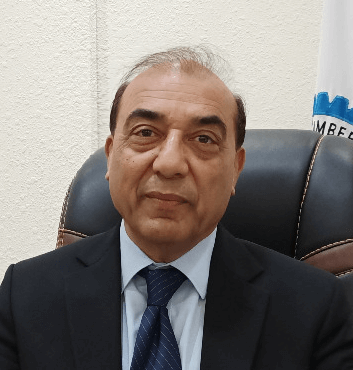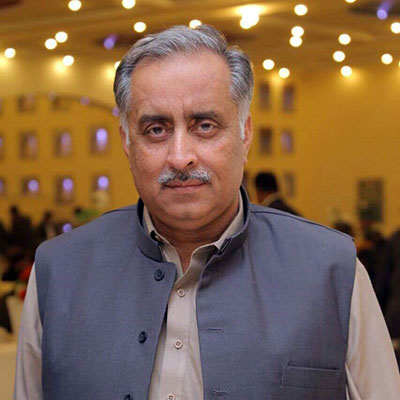As if by magic, Pakistan’s economic numbers have suddenly started to look attractive. So, what caused this fiscal magic? And how do the market gurus and leaders view these developments? Narratives’ asked three top players in their respective fields to determine the mood of the moment, and assess whether they see the positive economic numbers stretching into the next fiscal year.
“Investor confidence is thriving with trading volumes at all-time highs, speared by faith in the sustainability of an economic turnaround.”

Chief Executive officer at AKD Securities Ltd
Equities are on track to post another remarkable year, with the KSE-100 index gaining 9.5 per cent in the first five months of the ongoing calendar year to hit a four-year high. In May 2021 alone, the KSE-100 gained 8.1 per cent on a month-on-month basis — the highest monthly gain in 10 months. Overall, the market has returned 76.7 per cent in 15 months following its crash in March 2020. Economic metrics have improved substantially since the incumbent Government came into power, with GDP growth for the fiscal year 2021 expected to clock in at 3.94 per cent, exceeding previous estimates. And growth is still nascent, which is likely to dragoon the authorities to keep the economic stimuli intact in the near future — the primary reason underpinning the bull-run in Pakistani stocks. Against this backdrop, construction remains a focal point of government policies, while Pakistan’s technology companies continue to gain prominence in line with the trend of digital transformation witnessed across the globe during the pandemic. Heightened domestic consumption has also brought the food sector to the fore, thereby outperforming the KSE-100 index by a wide margin.
Investor confidence, a primary concern for investors due to previous boom and bust cycles, is thriving with trading volumes at all-time highs, speared by faith in the sustainability of an economic turnaround. The government has already proven its credentials through timely and targeted actions in averting a Covid catastrophe, converting it into the creation of opportunities. Steps including a sharp cut in interest rates to 7.0 per cent from 13.25 per cent, followed by a fiscal stimulus worth Rs. 1.3 trillion, and lastly, the Central Bank’s refinance facility for expansions, which to date has generated financing demand of Rs. 436bn, is likely to push up investment to the GDP by 3 per cent, and to facilitate the development of a mortgage market. Also, the authorities remained laser-focused on addressing structural issues on the economic front and in business policies.
One can see the fruits having begun to ripen with the external account showcasing $1bn surplus in 10 months of the fiscal 2021 vs. $19 billion deficit in fiscal 2018, while remittances have been at a record level of $24.2bn in 10 months of the current fiscal. In September, the government introduced the Roshan Digital Account, which, as per the latest release, recorded a $1.3 billion inflow and is likely to reach $3 billion by December ’21. The fiscal balance is reflecting an improvement with the to-date tax collection surpassing the target to stand at Rs. 4.2 trillion, +18 per cent year-on-year, whereas the primary balance stands at 1.0 per cent of the GDP vs. 2.2 per cent in the fiscal 2018. The slashing down of twin deficits has resulted in a reduction in debt accumulation, which in 10 months of this fiscal stands at Rs. 192.6 billion compared to Rs. 454 billion in the previous two years. The sea-change in base economic fundamentals has been acknowledged by foreign investors with Pakistan successfully returning to the international debt market, raising $2.5 billion through Eurobond and $500 million through Green Bond which was 600 per cent oversubscribed. However, equity foreign fund flows remain mixed, not only in Pakistan, but in many other frontier and emerging markets, because of various factors, including the fact that Asset Under Management of these funds has fallen sharply. Meanwhile, the attraction of developed markets has increased due to large government stimuli to spur growth.
Now, against the backdrop of the government’s multi-dimensional approach to address the country’s legacy issues, a look at the policy level changes is warranted. The authorities appropriately resolved the long-standing issue of Gas Infrastructure Development Cess (GIDC) to cut back fertiliser prices and increase its usage to improve crop yield, the results of which are now visible with major crop production at their highest levels. To contain the flow of circular debt, exacerbated by aggressive commissioning of power plants under the CPEC (China-Pakistan Economic Corridor), the government successfully renegotiated the tariff structure with independent power producers and took steps to ease the liquidity crunch in the energy system. Moreover, a petroleum policy is in the pipeline with a new refinery policy likely to be introduced soon — the first in over two decades. A timely renewal of the auto policy is also in the works. The government’s efforts to address business issues have been lauded by international agencies, with Pakistan’s ranking in ‘ease of doing business’ improving by 28 points to 108.
Hence, the market is all set to cross its previous high of 52,876 points achieved in 2017. An additional thrust to the market could come from investors taking fresh positions after missing the boat by not realigning equity portfolios with market trends.
“Recent improvements will not be sustainable since competing economies will eventually emerge out of their COVID-19 related restrictions.”

President Karachi Chamber of Commerce and Industry (KCCI)
The pandemic caught businesses by surprise and, even worse, caused many of them to fold. According to a survey conducted by the Pakistan Bureau of Statistics (PBS), published in January 2021, around 20 million people faced job losses, or could not work due to the lockdown. And even though economic activities recommenced, they did so with restrictions, so businesses are yet to see normalcy. Sales continue to be affected as the purchasing power of people has eroded and the cost of doing business has risen substantially in the post-lockdown scenario.
Although exporters eventually started receiving orders after the lockdown, the pace of recovery remained quite slow. Additionally, they faced delays and cancellations of consignments as various ports around the globe were confronted with closures and restrictions amid the pandemic. Adding insult to injury, businesses, exporters among them, also saw utility dues piling up and faced a scenario where even paying staff salaries became difficult.
Recent improvements witnessed in the exports of Pakistan, especially in textiles, will not be sustainable since competing economies will eventually emerge out of their COVID-19 related restrictions and lockdowns. At that time, competition will return to normal and Pakistan will again struggle to sustain orders with higher costs of manufacturing. It is suggested that the government make a viable and long-term policy and opt to facilitate businesses.
However, there are hopes that COVID-19 and its dangers to health will become a thing of the past, with the help of the COVID-19 vaccines. Some sectors of the economy have started to show positive signs and the economy is expected to maintain its rebound trajectory in the days to come. The Karachi Chamber of Commerce and Industry (KCCI) remains hopeful that 2021 will bring economic relief for the masses, as well as for the business and industrial community.
Economic numbers are currently depicting a growth trajectory and the KCCI hopes that the country does move toward sustainable economic growth. A provisional estimate of nearly 4 per cent GDP growth has indeed exceeded expectations and the estimates of agencies such as the IMF, World Bank and the State Bank of Pakistan (SBP) itself. Also, textile exports reportedly went up 3.4 times in April 2021, while low interest rates have boosted auto sales. Similarly, cement and its allied construction industry are booming due to the incentives to the construction sector and the Naya Pakistan housing scheme.
The Pakistan Stock Exchange (PSX) also recently recorded all-time high daily trading volumes. The industrial sector is estimated to be up by 3.57 per cent while the services sector is estimated to have grown by 4.4 per cent in the fiscal year 2021. However, we need to be cautiously optimistic to see if this growth is sustainable, based on structural reform, or a cyclical boom due to low interest rates and a backlog of orders from the pandemic. Many businesses are still suffering, for example, due to Covid-related smart lockdowns. Additionally, many retailing services such as marriage halls, restaurants, gyms etc. have seen a decline. It now all depends on the budget for fiscal year 2022 and whether or not the government will be able to resist the tough IMF conditions and give a pro-growth budget for businesses. Enabling the right conditions for businesses is what will bring relief for the common masses.
However, the sad reality is that even if the economy is on the route to a general recovery, certain sectors still have a long road ahead, till the point when all COVID-19 restrictions imposed on the economy are lifted and life in the country returns to normal. The major proportion of the workforce in the country comprises of daily wagers who have been facing restricted movement since early 2020. Some of them were dependent upon businesses and industries while others were dependent upon families visiting recreational attractions throughout the country. With business activity in most sectors still struggling to stabilise and recreational sites in the country, including the beaches mostly closed, a lot of bread earners have no income. People who used to survive proudly on whatever they earned have been forced to resort to cutbacks, borrowing or, sadly, crime. Despite the fact that the federal and provincial governments have been trying to help this sector through various initiatives such as the Ehsaas programme, the reality is that this sector consists of hundreds of thousands of families who cannot all be covered.
Therefore, if life for this many people has not improved, it can only be said that the economy is improving for certain sectors of the economy, while some other sectors are still struggling.
“If we focus on the current harvest, we have had bumper wheat, rice, maize and sugarcane crops. If we want to maintain the high production that we currently have, the government must focus onreducing the cost of production.”

President, Pakistan Kissan Ittehad
The problems in Pakistani agriculture have been created over decades, mainly because the state has consistently ignored farmers, who have not been given due support and importance. Today, despite being an agrarian economy, we import wheat, edible oils, cotton and lentils in large quantities. And these problems are only mounting. In 1992 we produced 10.3 million bales of cotton, while India produced 10.1 million bales. At that time, the weight of our cotton [per bale] was around 170-180 kg; it has now gone down to 150 kg [per bale], which is lower than the national standard weight. Today India produces 40 million bales annually, while we have gone from 10.3 million to 5.6 million bales.
In order to understand why we have declined we must focus on agricultural research and the costs of production for farmers. Our agriculture research budget is 0.18 per cent of GDP, as compared to 0.4 in India, 0.5 in China and 1.75 in Brazil. Because these countries focused on research, they outpaced Pakistan when it comes to the adoption and implementation of the latest technology. India began using BT (genetically modified) cotton in 2002 via a joint venture with Monsanto. Pakistan was late in the adoption of this technology and did no original work on it, merely emulating what others were doing. And because we do not invest in research, our production is low.
The technology that we have benefited from, such as hybrid seeds, which almost tripled our maize production, has all been imported. All our meetings about a greater implementation of technology, have come to naught. In addition, many of the students graduating from our agricultural universities do not have the required experience, there is not enough agricultural research happening in these universities. The current requirements for obtaining an agricultural degree are grossly insufficient. If we look at the extension service in Punjab, there are around 30,900 farms and only 600 agricultural officers. As a result, they are not able to provide adequate assistance to farmers.
Our costs of production are higher than the rest of the world where agriculture is subsided. Here we only have subsidies in name. Recently in India, when the DOP (Decomposed Organic Phosphorus) fertiliser rate went up to 2,400 Indian rupees, the Indian government immediately provided a subsidy to bring it back down to 1,200 Indian Rupees (around PKR 2,400). Meanwhile, our DOP rate is PKR 5,600. While Indian farmers get electricity at subsidised rates, Pakistani farmers are unable to pay their bills. Rather than looking at agriculture as an economic issue, we talk about big farmers vs small farmers and turn it into a political issue.
If we focus on the current harvest, we have had bumper wheat, rice, maize and sugarcane crops. Furthermore, farmers have received better rates for their crops this year. However, cotton farmers have taken a great loss due to a poor crop, leaving them unable to benefit from the higher rates. Crucially, this year, farmers received better rates at the time of the harvest, whereas in the past rates would be low during the harvest and increase later on, forcing the farmer to sell at the lower rate. Nevertheless, the pace at which the cost of key inputs such as fertilisers and electricity is rising, is a minus point, if we want to maintain the high production that we currently have, the government must focus on reducing the cost of production so that farmers can purchase the highest possible amount of inputs. There has recently been news that the government might be imposing a new GST under IMF pressure. That would be a misstep. Finally, if we look at an issue like food inflation, the media makes a lot of noise when the price of tomatoes reaches Rs. 200/kg, but when low rates prevent farmers from recovering cost of production and force them to dump crop, the media is nowhere to be seen. Last year, farmers sold wheat at Rs. 35 per kilo. This included all costs which were paid by the farmer, but it was sold to the customer at around Rs. 80 per kilo. Similarly, last year we sold sugar cane to the mills at Rs. 190 per mann, but customers had to buy sugar at high prices. We have to find a way of breaking the hold of the Arthi (Middleman) in the agricultural sector, which the government is not focusing on. The Arthi takes an 8 per cent cut simply for transporting the farmers’ crops. The law mandates that the Arthi can only take 2 per cent, but it is not being implemented. It is sad when food is sold to customers who are daily wage earners at unaffordable prices. We should seek to reduce the cost of production so that we can at least provide wheat to the ordinary man at reasonable prices.



